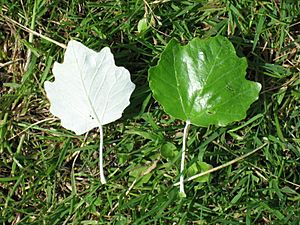Binomial nomenclature facts for kids
In biology, binomial nomenclature is a special way to name all living things. It gives every species a unique, two-part name. Think of it like a first and last name for plants and animals! The first part tells you its genus (a bigger group it belongs to). The second part is specific to that one species. The word "binomial nomenclature" simply means "two-part naming system."
Contents
Who Started This Naming System?
A Swedish scientist named Carl Linnaeus (1707–1778) made this naming system famous. He was a botanist (someone who studies plants) and a doctor. Linnaeus gave a two-part name to every plant and animal he knew.
Other scientists had used similar two-part names before Linnaeus. But after he used it so widely, everyone agreed it was a great idea. His system became the standard way to name species around the world.
Why Is This Naming System Important?
The binomial nomenclature system is very useful for several reasons. It helps scientists talk about species clearly.
Clear and Simple Names
This system saves words. Instead of long descriptions, each species gets a short, unique name. It is used everywhere, so scientists worldwide understand it.
No More Confusion
Before this system, people used local common names for species. This caused a lot of confusion! For example, a "robin" in America is a different bird from a "robin" in Europe. Also, one common name might be used for many different species.
Linnaeus's system fixed this. Now, everyone uses the same scientific name for the same species.
Why Latin Names?
Linnaeus chose Latin names for two main reasons:
- It avoided arguments between countries. No one country's language was favored.
- Most educated people at the time knew Latin. This made it easier for scientists to communicate.
Key Benefits of Binomial Nomenclature
- Used Worldwide: Scientists everywhere use the same names.
- Clear: It stops confusion from different local names.
- Unique: Each species has its own special name.
- Stable: The rules help names stay the same over time.
- Simple: It's often easier to remember than older, longer names.
Where Do These Names Come From?
The parts of a scientific name can come from many places. Often, they are Latin words. Sometimes, they come from Greek words that have been made to sound like Latin.
Today, names can also come from other sources. They might be a Latinized version of a place, a person's name, or a word from a local language.
Related Pages
Images for kids
-
Orcinus orca, the orca or the killer whale
-
Echinopsis pachanoi, the San Pedro cactus
-
Carl Linnaeus (1707–1778), a Swedish botanist, invented the modern system of binomial nomenclature
See also
 In Spanish: Nomenclatura binominal para niños
In Spanish: Nomenclatura binominal para niños








